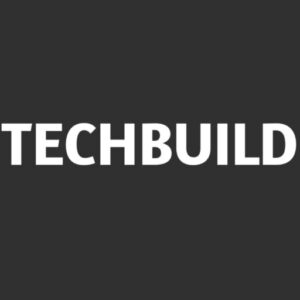Android emulators are essential for developers and testers to emulate Android environments on macOS. They provide pocket-friendly means of testing applications on a plethora of devices and Operating System (OS) versions without the need for physical hardware. But an Android Emulator for Mac is at times challenging to operate, particularly with compatibility issues while running on macOS.
This article discusses typical issues, their fixes, and how cloud testing platforms like LambdaTest can help make it easier.
Introduction to Android Emulators on macOS
Android emulators provide Android device emulation on macOS for developers to easily test applications. They are most useful in debugging, performance testing, and cross-device testing. Nevertheless, macOS users usually experience unique problems due to hardware constraints, software interference, or emulator setup.
As organizations move toward quicker release cycles, cloud testing platforms such as LambdaTest provide Android app testing solutions on a scalable basis. They get rid of the hassle of setting up local emulator setups by allowing direct access to real devices and virtual environments.
Common Issues With Android Emulators on macOS
Android emulators for macOS are crucial for the testing of applications but tend to be plagued with issues that can ruin workflows. What follows is an in-depth examination of the most prevalent issues and useful fixes to them.
- Performance Problems
Performance problems are among the most common problems, particularly on old devices or low processing power and RAM devices. Android emulators consume a lot of resources, and that may lead to bad performance or not responding. Rectify this by increasing the RAM and CPU cores for the emulator by modifying the Android Virtual Device (AVD) settings.
For small system images, e.g., ARM versus x86, the resource usage can also be minimized in case hardware acceleration cannot be used. Closing unused programs to release system resources will also improve emulator performance and stability drastically.
- Hardware Acceleration
Hardware acceleration bugs are also common, especially on Apple Silicon computers like M1 or M2 Macs. Hardware acceleration is used by most emulators to provide a smooth experience, but the absence of virtualization support can cause bugs.
To resolve this, make sure that virtualization is enabled in your Mac’s BIOS/firmware. For Apple Silicon users, utilize emulators that are ARM architecture-optimized. Also, updating Android Studio and the current version of HAXM or its ARM counterpart might resolve compatibility problems.
- Dreaded System UI
The dreaded “System UI Isn’t Responding” Errors are caused by an emulator hang-up or crash during boot. They are annoying but are most often due to corrupted AVD data or improper graphics settings. Reinitializing AVD data and an emulator restart fixes this.
Converting to software rendering from auto graphics rendering in AVD settings may also fix graphical errors. Having both macOS and Android Studio up to date helps maintain compatibility and lowers the occurrence of said issues.
- Incompatibility with macOS
Being incompatible with macOS Updates is a common issue among developers. Later updates for macOS occasionally introduce changes that break emulator capabilities, leaving users less able to test their apps. To avoid this, review Android Studio release notes for patches that resolve compatibility issues.
Downgrading to an older version of macOS is always an option in extreme situations, though this is not desired by most. Alternatively, the use of cloud-based testing tools avoids local compatibility issues by giving access to virtual devices within an emulated environment.
- Slow Boot Times
Slow Boot times can interfere with productivity by slowing test workflows. Emulators take longer to boot because of large system images or improperly configured settings. Turning on “Quick Boot” in AVD settings makes the emulator store its state and boot faster in future launches. Preloading common system images will also decrease boot times.
For those looking for an even quicker option, cloud-based emulator setups offer instant access to virtualized devices without any need to sidestep local hardware constraints in the process.
By focusing on these pervasive problems with focused solutions, testers and developers can maximize their workflows and provide smoother operations when working with Android emulators on macOS.
Optimizing Your Workflow With Cloud Testing
Android emulators running on macOS are a crucial step for developers and testers to test app compatibility across devices. The emulators mimic Android setups to allow for hardware-free testing of apps.
Nevertheless, macOS users normally face performance bottlenecks, hardware acceleration failure, or system update incompatibilities. It is essential to solve these issues to ensure smooth development processes.
Performance issues are among the most frequent issues. Android emulators are demanding and slow on low Random Access Memory (RAM) or processing computers. Giving the emulator more resources, shutting down unnecessary programs, or using light system images makes an enormous difference in performance.
In the same manner, hardware acceleration issues, particularly on Apple Silicon computers, are all about activating virtualization or utilizing Advanced RISC Machine (ARM)-compatible emulators. Having the latest macOS and Android Studio also avoids compatibility issues.
Another common issue is the “System UI Isn’t Responding” error that freezes or crashes the emulator. This is often fixed by deleting Android Virtual Device (AVD) data, disabling hardware acceleration, and using software rendering or having ample disk space. Boot times are also a thorn in a developer’s side and can be improved by turning on “Quick Boot” within AVD settings or preloading commonly used system images.
Despite such patches, local emulators are still restricted and may disturb test processes. That is where cloud-based testing solutions are useful.
Cloud testing platforms such as LambdaTest offer an alternative to local emulators in the form of access to thousands of real devices and virtual platforms. This does away with hardware dependencies and provides consistent performance regardless of varying configurations.
Cloud testing allows organizations to test on various devices at once without clogging their systems, use testing environments remotely for improved collaboration by teams, and prevent crashes associated with local configurations.
To Android automation developers, LambdaTest is an AI-native test execution platform that encompasses Selenium, Appium, and others. With its enormous library of more than 3,000 real devices and browsers, exhaustive app compatibility testing is guaranteed. Additionally, it features blazing velocity and auto-healing of flaky tests that make it the best for workflow automation.
Though cloud-based platforms make testing simpler at scale, open-source tools remain convenient for replicating issues locally. Homebrew is a macOS package manager that simplifies the installation of dependencies like Android Studio or ADB.
Genymotion offers an alternative emulator with pre-set virtual devices for testing various Android versions and configurations. Complex troubleshooting methods, such as Android Studio logcat examination, custom AVD settings, and regular disk maintenance, improve emulator performance.
LambdaTest, a platform with lightning-fast release cycles, auto-healing, and SOC2 Type2 certification, offers secure testing environments for small, medium, or large-scale organizations. Its features include auto-healing, SOC2 Type2 certification, and GDPR compliance.
Android emulator troubleshooting on macOS is intimidating initially but can be easily done with the appropriate tools and techniques. With the application of local fixes along with contemporary cloud-based platforms, developers can successfully overcome problems while still providing quality app releases.
Short of Android emulation on macOS, however, is required but not trouble-free. Familiarity with frequent glitches and taking advantage of open-source tools and cloud platforms such as LambdaTest simplifies workflows a lot. Local testing or cloud-based testing at scale, the tools see to it that applications provide hassle-free UXs on every device and OS.
Open-Source Tools for Troubleshooting Android Emulator Issues on macOS
Whereas cloud solutions simplify the process of testing, open-source software can similarly be employed to rectify emulator issues locally:
- Homebrew
Homebrew simplifies the installation of software on macOS. Utilize it to install fundamental dependencies like Android Studio or other development applications.
- Genymotion
Genymotion is another capable alternative emulator that offers enhanced performance compared to the default Android Emulator for Android Studio. It comes with pre-configured virtual devices, which are test-optimized.
- ADB Commands
ADB offers direct communication with attached emulators and devices. Utilize it to debug or reset configurations.
Troubleshooting Techniques Common Android Emulator Issues on macOS
Troubleshooting is necessary when using Android emulators on macOS for optimal performance and to resolve common issues. Below are some effective ways to troubleshoot emulator issues.
Logcat Analysis is an essential tool for determining errors when booting an emulator. Logcat, under Android Studio, offers detailed logs that can be used to identify problems like missing configurations, libraries, or crashes.
By analyzing these logs, developers can determine the root of the problem and take corrective action accordingly. For instance, in case an emulator does not boot because of a missing dependency, Logcat will yield error messages that direct corrective action.
Custom Emulator Settings enable developers to try out different configurations within the AVD Manager. Tinkering with screen resolution and Dots Per Inch (DPI) settings can be used to fine-tune performance for particular use cases.
When newer Application Programming Interface (API) levels lead to instability or crashes, reverting to older, stable versions can resolve compatibility issues. Using alternate graphics rendering modes i.e., changing between hardware and software rendering will also reduce graphic bugs or stabilize on hardware whose Graphics Processing Units (GPUs) are unsupported.
Disk Cleanup is another crucial step in performance maintenance. Caches and temporary files developed during the usage of the emulator can, throughout it, lead to slowdown or inability to start. Cleaning these files from time to time ensures that the emulator runs at its best and does not unnecessarily consume resources.
For instance, disk cleanup by removing unused system images or earlier AVD configurations can ensure that there will be no crashes due to low storage.
With the integration of these methods, debugging using Logcat analysis, custom settings for customized configurations, and disk cleaning for optimization, developers can easily debug and optimize their Android emulator experience on macOS.
Future of Seamless Android Emulator Integration on macOS
The future of Android emulators on macOS looks bright, driven by technological improvements and the need for cross-platform compatibility. Emulators are shifting to provide better performance, more integration with macOS, and richer experiences for users. This will reduce the gap between the Android and macOS ecosystems, improving app development and testing.
Future emulators will improve performance by leveraging the native hardware of macOS, specifically Apple Silicon processors. This will mean faster boot times, more responsive app use, and better stability. Enhanced virtualization support will enable resource-intensive apps to work seamlessly without impacting system performance.
Seamless integration with macOS functionality will also be essential. Future emulators will provide enhanced file-sharing, clipboard syncing, and multi-touch gesture recognition, and developers will, therefore, be able to interact with Android applications in the normal way. This will provide an integrated workflow in which developers can effortlessly switch between macOS and Android realms.
Cloud platforms will complement these breakthroughs with elastic substitutes for on-premises emulators. These platforms will be tightly aligned with on-premises developer tools so that developers can switch freely between on-premises and cloud environments. This blended practice will allow organizations to leverage the power of Android automation without incurring hardware dependencies.
Such technologies as AI-powered capabilities will also streamline workflows even more by auto-predicting and correcting usual mistakes or optimizing emulator settings based on some app needs. With the macOS development continuing to progress, that of Android emulators’ user-friendliness and compatibility with developers will progress as well, so they will be able to provide better apps earlier than ever.
Conclusion
To conclude, Android emulator debugging on macOS is cumbersome but achievable with the proper tools and methods. Developers can address performance bottlenecks and compatibility issues with multiple solutions.
Cloud platforms offer real-time access to virtual environments for app testing, improving release cycles without trading off on quality. Familiarity with typical problems and application of open-source tools and the latest cloud platforms can accelerate workflows, providing a smooth UX on any device and OS.
Stay tuned for the latest updates and notifications from TechBuild, where we bring you cutting-edge insights, trends, and innovations from the world of technology. Don’t miss out on essential information to stay ahead in the tech industry!










